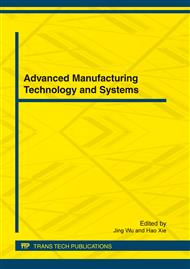[1]
Koplev, The cutting process, chips and cutting forces in machining CFRP, Composites.1983, 14(4):371-376.
DOI: 10.1016/0010-4361(83)90157-x
Google Scholar
[2]
L. Lasri, M. Nouari, M. El Mansori, Working parameters effects on machining induced damage of fibre-reinforced composites: numerical simulation analysis, Int J Mater Prod Technol. 2008,32(2):36-51
DOI: 10.1504/ijmpt.2008.018977
Google Scholar
[3]
L. Lasri, M. Nouari, M. El Mansori, Modeling of chip separation in machining unidirectional FRP composites by stiffness degradation concept, Composites Science and Technology. 2009,69:684-692
DOI: 10.1016/j.compscitech.2009.01.004
Google Scholar
[4]
H. Sekine, P. W. R. Beaumont, Micro-mechanical theory of macroscopic stress-corrosion cracking in unidirectional GFRP, Journal of Materials Science.2006(41), 4604-4610
DOI: 10.1007/s10853-006-0328-9
Google Scholar
[5]
H. Sekine, P. W. R. Beaumont, Micromechanically derived lowest threshold stress intensity factor for macroscopic stress-corrosion cracking in unidirectional GFRP composites, Journal of Materials Science. 2010(45):5988–5992
DOI: 10.1007/s10853-010-4802-z
Google Scholar
[6]
Xiuli Zhang,Changhong Jin,Zhenguo Zhang, Study on incision of glass fiber-reinforced composites (in Chinese), Journal of Functional Materials. 2010(3):505-507
Google Scholar
[7]
Xiuli Zhang,Chaohui Xie,Heng Zhang, An experimental investigation into the machining quality of composites influenced by fiber orientation (in Chinese), China Mechanical Engineering. 2009,20(21):2617-2620
Google Scholar
[8]
Xiuli Zhang,Liang Yan, Hongmei He, Study on the orthogonal cutting technologies of GFRP (in Chinese), Materials Review. 2011,25(5):59-61.
Google Scholar
[9]
Xiuli Zhang,Zhenguo Zhang,Fengchun Wei, Study on milling of glass fiber-reinforced composites (in Chinese), Materials Review. 2009,23(4):84-87
Google Scholar
[10]
Zhifang Yang, Xiuli Zhang,Heng Zhang, Experiment study of drilling thick composite laminates (in Chinese), Journal of Henan University of Science and Technology Natural Science. 2008(1):1-5
Google Scholar
[11]
Lijun He,Guozhi Lv, Analysis of partly bridge-toughening in fiber-reinforced composites (in Chinese), Ningxia Engineering Technology. 2002,1(3):208-211
Google Scholar


